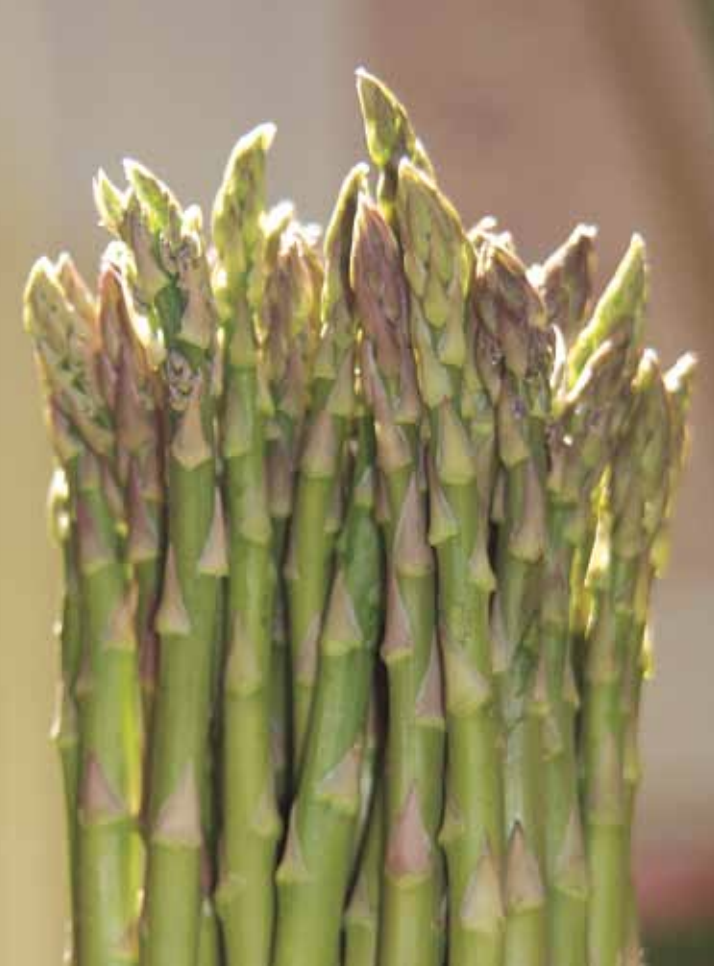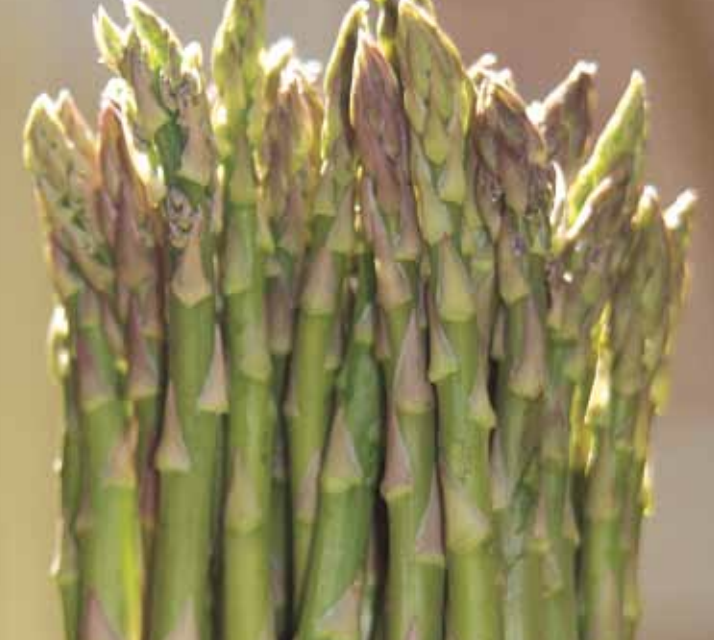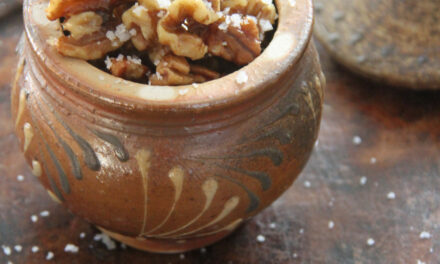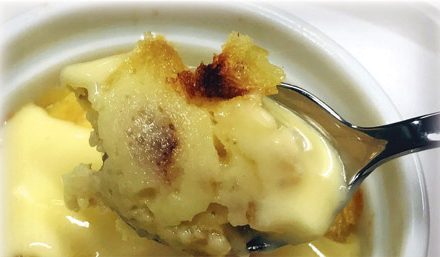Spring has just arrived here in New England. It has been a long wait, but in a few short weeks, our dormant gardens will be bursting with the first crops of the season. Just around Memorial Day, we can hope to see small buds of perfect asparagus tips piercing the ground. Asparagus grows beautifully here in New England. In fact, Hadley, Massachusetts has often been called the asparagus capital of the world. Hence the plant’s local nickname, “Hadley Grass.”

Some cultures believe that consuming plant foods that reach up towards the sun can elevate our mood, lift our spirits and in general, improve our overall health and happiness. We feel lighter, healthier and more connected to our world. Ancient Egyptians considered asparagus to be an aphrodisiac (consider its shape)—how’s that for a reason to up your intake?
Why grow spring asparagus? Aside from its aforementioned reputation as an aphrodisiac, the reasons are many. Since Hadley is world renowned for its asparagus crop, Massachusetts pride is a great reason to join in and attempt this in your own backyard. Though it takes a bit of planning and patience, the reward of a bountiful harvest is well worth the effort.
- Flavor! Hands down, it is one of the tastiest green vegetables—earthy and nutty. Tender shoots are a treat, especially eaten raw straight from the garden. This is absolutely as local as your eating can be.
- Nutrients! What feels better than snapping off a stem while gardening and having a nutrient-dense, delectable snack? And don’t forget that asparagus is a natural nutritional hero. It is one of the very best food sources of folic acid, which is known to lower the risk of heart disease, certain cancers, and neural tube defects such as spina bifida.
- Low Calorie! It has only 4 calories per stalk on average and is loaded with vitamins, potassium, and fiber. It contains high levels of vitamin K, critical for healthy blood clotting and strong bones, and is an excellent diuretic and cleanser, aiding in protein processing and kidney flushing.
As with all vegetables, peak freshness ensures perfect flavor. Look for tight stalks of a medium green color with purple highlights. To test for freshness, give the bunch a squeeze and listen for a squeak. If you hear one, they’re perfect. The size of the stalk is a personal preference and does not indicate tenderness (although some may argue this point). For best flavor, use within 2-3 days of purchasing or picking. Asparagus is best stored in the vegetable crisper with the woody stems wrapped in a damp paper towel.
Finally, any discussion of asparagus would be incomplete without mentioning the end result of consuming asparagus. As it is a diuretic, a trip to the restroom will cause you to notice a distinctive odor. This is, fortunately, the only hazard of enjoying it! And bear in mind, the smell is not a sign that anything is wrong. Research suggests* that this odor stems from a variety of sulfur-containing compounds in the asparagus. It seems that a fairly high percentage of the population experiences this “side effect,” but interestingly, not everyone.
When Memorial Day rolls around, make a point of enjoying fresh, local asparagus. Given its health benefits, ease of preparation and great taste, if a sense of urgency to get your spring fix comes upon you, go ahead and enjoy!
Roasted Asparagus:
Preheat oven to 425 degrees.
Spread the stalks in a single layer on a cooking stone or baking sheet. Using a basting brush, coat asparagus with extra virgin olive oil. Roast for 3 minutes, turn with tongs, and roast 3 minutes more. Sprinkle with a pinch of sea salt and enjoy. Roasted asparagus can be enjoyed cold as well.
Steamed Asparagus:
Clean the spears thoroughly with cold water. Snap off the woody ends where they naturally break or peel with vegetable peeler. Use kitchen string to bundle spears together (about 10 in a bundle). Arrange bundles upright in a tall, lidded pot. This allows the tougher bottoms to cook more than the delicate tips. Add 2-3 inches of water. Add a crushed garlic clove, piece of onion, or a lemon slice to the water if desired. Bring to a boil, covered, and steam for 2-6 minutes, or until stalks turn to a bright green.
Lemon Mustard Dressing:
- ¼ cup spring water • 1 finely chopped shallot • 1 teaspoon of extra virgin olive oil • 1 sprig finely chopped fresh dill • ½ teaspoon of fresh lemon juice • ¼ teaspoon Dijon mustard • Sea salt • Freshly ground black pepper
Whisk first 6 ingredients together (water through Dijon mustard), drizzle over asparagus and sprinkle lightly with sea salt and fresh pepper. Recipe courtesy of Robert Surles – otherwise known as “Chef Bobo.”
By Kristen Lofstrom, CHHC, updated and reprinted from Spring 2019.







